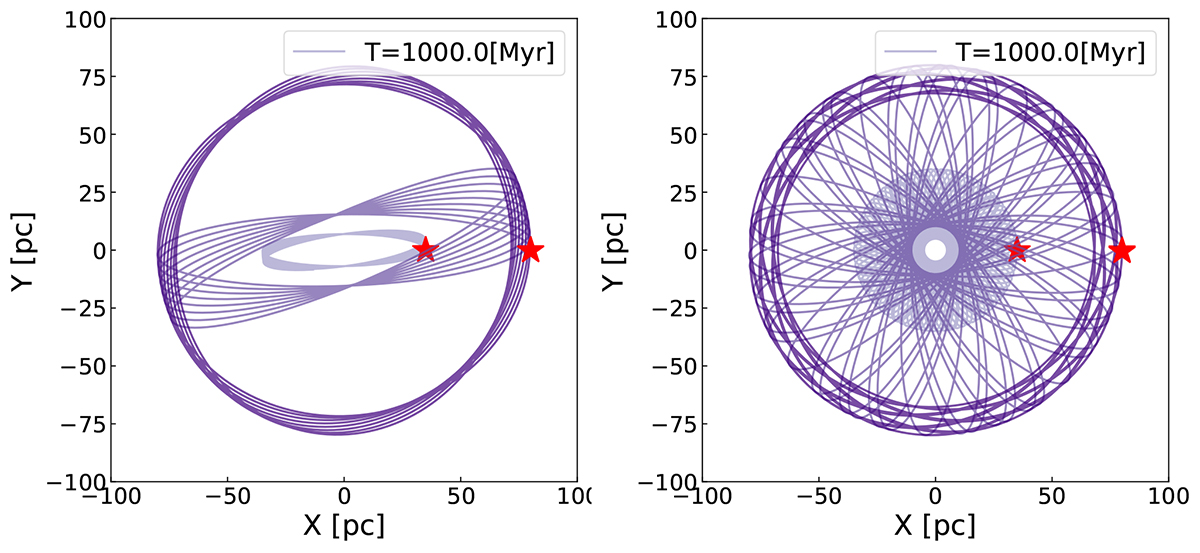Fig. 8.

Download original image
Scenario II: Stellar orbits (test particles) are calculated during 1 Gyr in the potentials of dwarf models D2 (massive Burkert) in the left panel and D4 (NFW) in the right panel. Both potentials have the same mass at 300 pc, but the NFW has more mass in the inner region. The inner radial orbits in each potential are selected to have an apocentre of 35 pc, corresponding to the observed projected offset between the younger and older stellar component in Leo T (inner red star), and the two outer orbits (one radial and another near-circular) have apocentres at 80 pc, similar to the offset between the gas density peak and the old stellar component (outer red star). The radial orbits are set with tangential velocities with 20 per cent of the local circular velocity, whereas the outer near-circular orbit was set with 90 per cent. These orbits highlight how much faster the mixing of the material is in model D4 due to a stronger precession produced in cuspy dark-matter potentials. The orbits are calculated with DELOREAN (B20).
Current usage metrics show cumulative count of Article Views (full-text article views including HTML views, PDF and ePub downloads, according to the available data) and Abstracts Views on Vision4Press platform.
Data correspond to usage on the plateform after 2015. The current usage metrics is available 48-96 hours after online publication and is updated daily on week days.
Initial download of the metrics may take a while.


